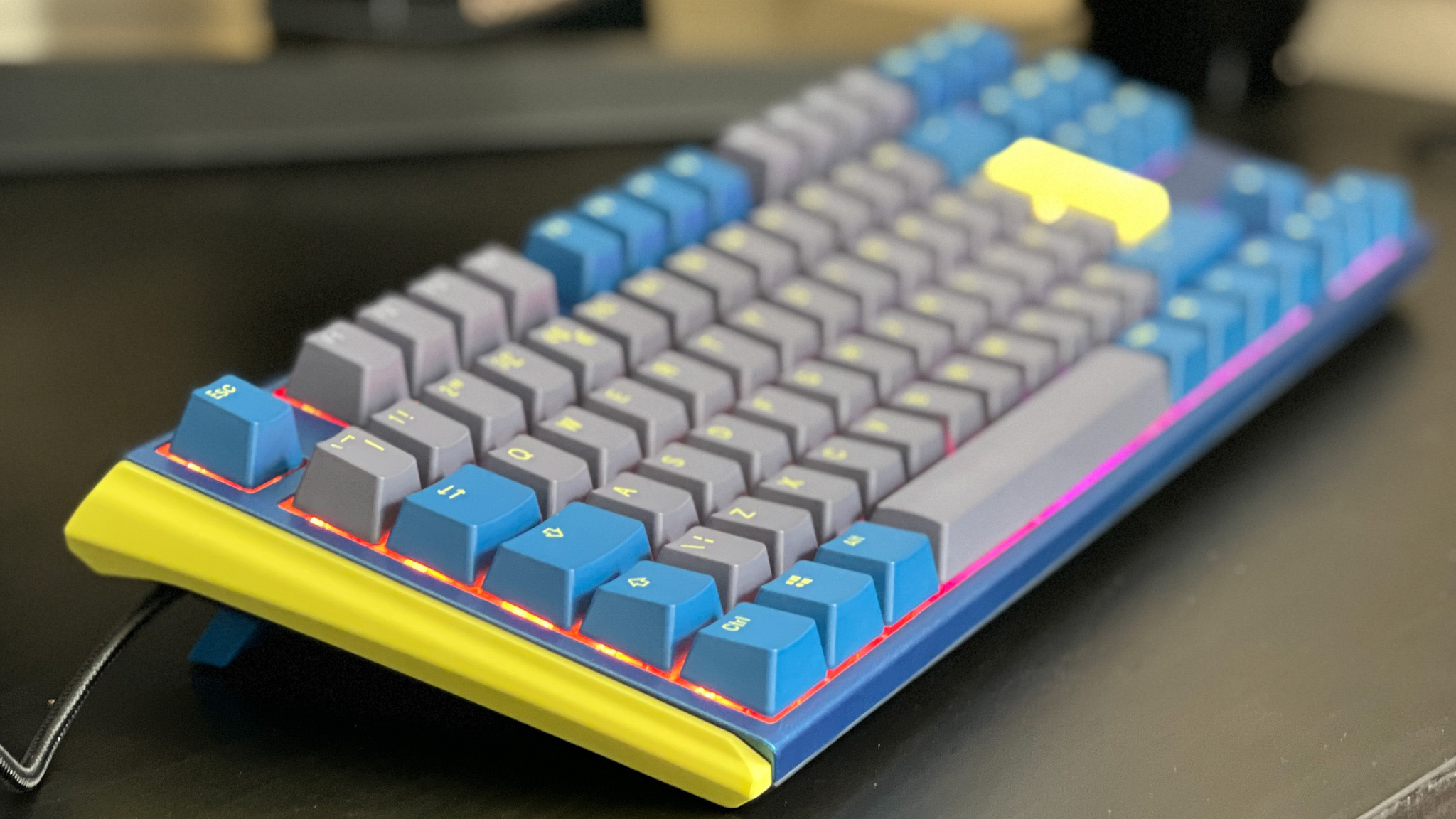GamesRadar+ Verdict
The Ducky One 3 is a gaming keyboard built to look and feel great. High quality craftsmanship, a durable chassis, and excellent attention to detail make this one of the most aesthetically pleasing decks on the market, and the speeds on offer can keep up with the latest games as well. While macro functionality is a little tricky, there's one hell of a lot of ticked boxes at a great price point.
Pros
- +
Impressive build quality
- +
Speedy
- +
Fully programmable and hot-swappable
- +
Excellent typing feel and sound
Cons
- -
No dedicated software
- -
No wrist rest
Why you can trust GamesRadar+
The Ducky One 3 is here, and this thing is gorgeous. Taking over from the renowned One 2 was never going to be an easy job, but thankfully this keyboard master brand has knocked it out of the ballpark again. With lower latencies, hot-swappable switches, and a whole host of new designs to feast your eyes on, Ducky has put its best foot forward in an attempt to rival some of the best gaming keyboards on the market.
While some functionality features may be missing or require additional steps, this is a deck built to feel good and look good while doing so. If you give the Ducky enough time to work for you, you're going to be seriously impressed with what's on offer here. The Ducky One 3 is available in 60%, 65%, TKL, and full-sized form factors, with prices starting at around $119 / £120 and moving up to $159 / £140.
We put the TKL model to the test, seeing where the $149 / £130 iteration sits amongst the best hot-swappable keyboards with a gaming edge.
Ducky One 3 design
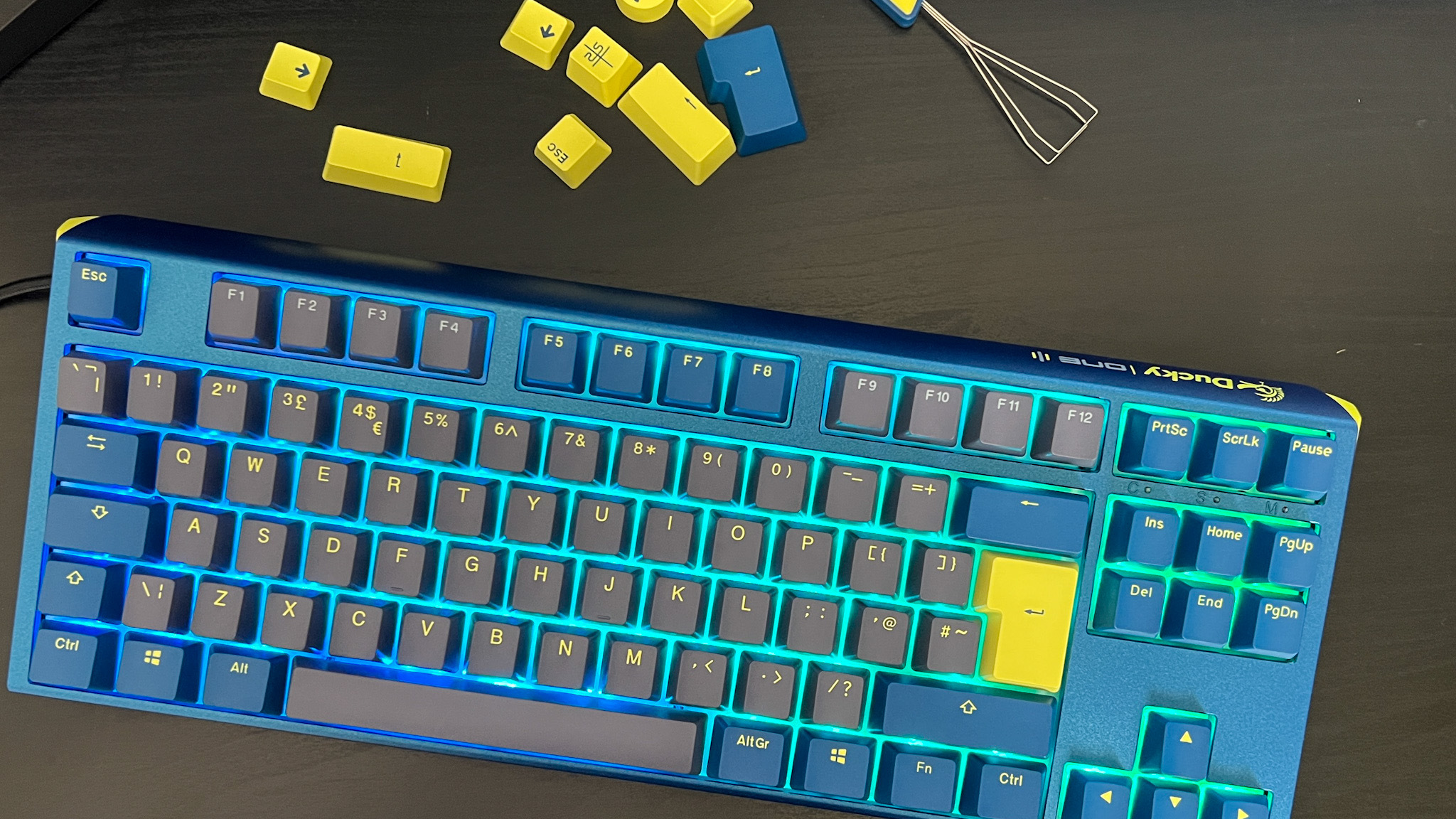
I've already said it, but it bears repeating: the Ducky One 3 is one of the best-looking gaming keyboards I've had my hands on. Of course, if you're not a fan of the yellows and blues of the Daybreak model that we received, there are plenty of options out there - from the die-hard full-yellow QUACK model to the chilled pastel pink of the Fuji colorway.
It's refreshing to see a deck eschewing the typical black aesthetic of a gaming keyboard, and the deep blues, bright yellows, and almost-purple grays of my test unit certainly impressed. There's a feeling of quality in these rich colors, to the point where the plastic yellow stripe manages to swerve the trap of feeling cheap (a trap it could have very easily fallen into).
Instead, everything feels flashy but luxurious, thanks to the excellent craftsmanship on the chassis and top plate themselves. The pinpoint attention to detail also works hard to make this feel like a top-of-the-range deck, with color-matched legends (though such a design does make them difficult to see in darker conditions) and a cable runner underneath.
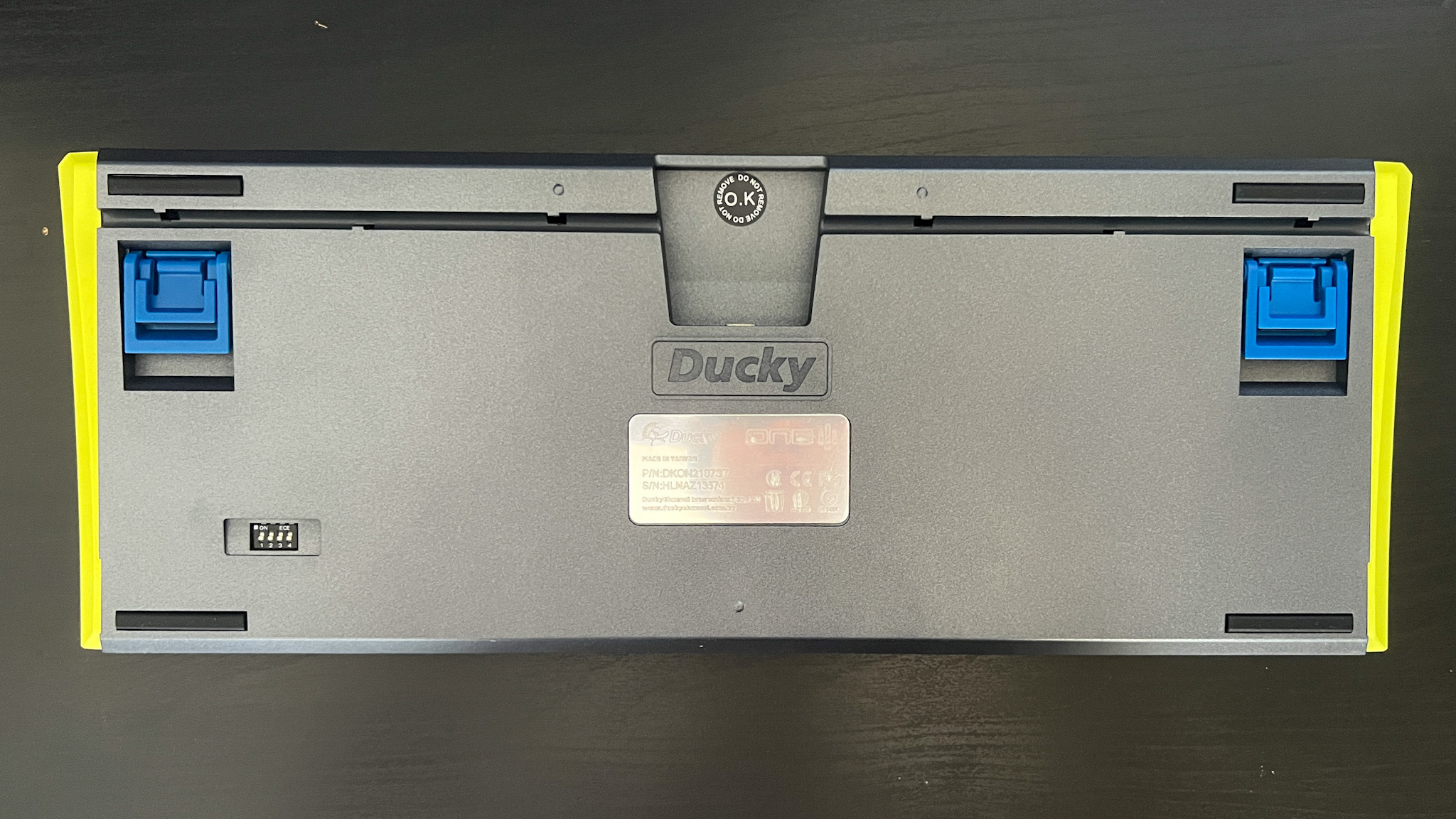
If you're not a fan of the yellow accent color, Ducky also provides a range of alternate keycaps to play with. I opted to keep things straight blue and gray, though did enjoy the novelty Escape key for a splash of brightness. I loved the aesthetic so much that I often kept the RGB switched off to keep things streamlined.
The PBT keycaps feel soft under hand, but still maintain a slightly grainy surface to keep your grip steady. Plus, I never noticed any chips or scuffs to these caps when removing to swap the switches - a testament to the quality of this build.
While there's no wrist rest, making things a little less comfortable during longer sessions, you're still getting a metal baseplate underneath a plastic chassis, with a sound dampening layer of foam sandwiched under the PCB as well.
Ducky One 3 features

The Ducky One 3 is slim on its feature list, but it doesn't need to pack the kitchen sink into its spec sheet. This is a keyboard designed to feel great and offer speeds capable of keeping up with the latest games, rather than being an all-in-one control panel. Plus, you're still getting all the RGB and macro effects you might expect from a gaming keyboard at this price - you just might have to work a little harder to set them up.
That's because there's no official software to program the One 3. While all keys are fully programmable, you'll need to dig through user manuals to find function commands to set them yourself, directly on the deck. This is the only major fault I could find with Ducky's latest keyboard, and it's more of a caveat. You can program your own macros, but it's especially fiddly to do so - the process would be a whole lot smoother with a dedicated UI and may leave those buying their first gaming keyboard a little lost.
At $149.99 you would expect the software to be able to easily set profiles and macros, but you likely wouldn't get a keyboard with this kind of craftsmanship, hot-swappability, and luxurious feel factor. It's a tradeoff for sure, and if you're not a macro power-user, it's a sacrifice that feels easy to make.
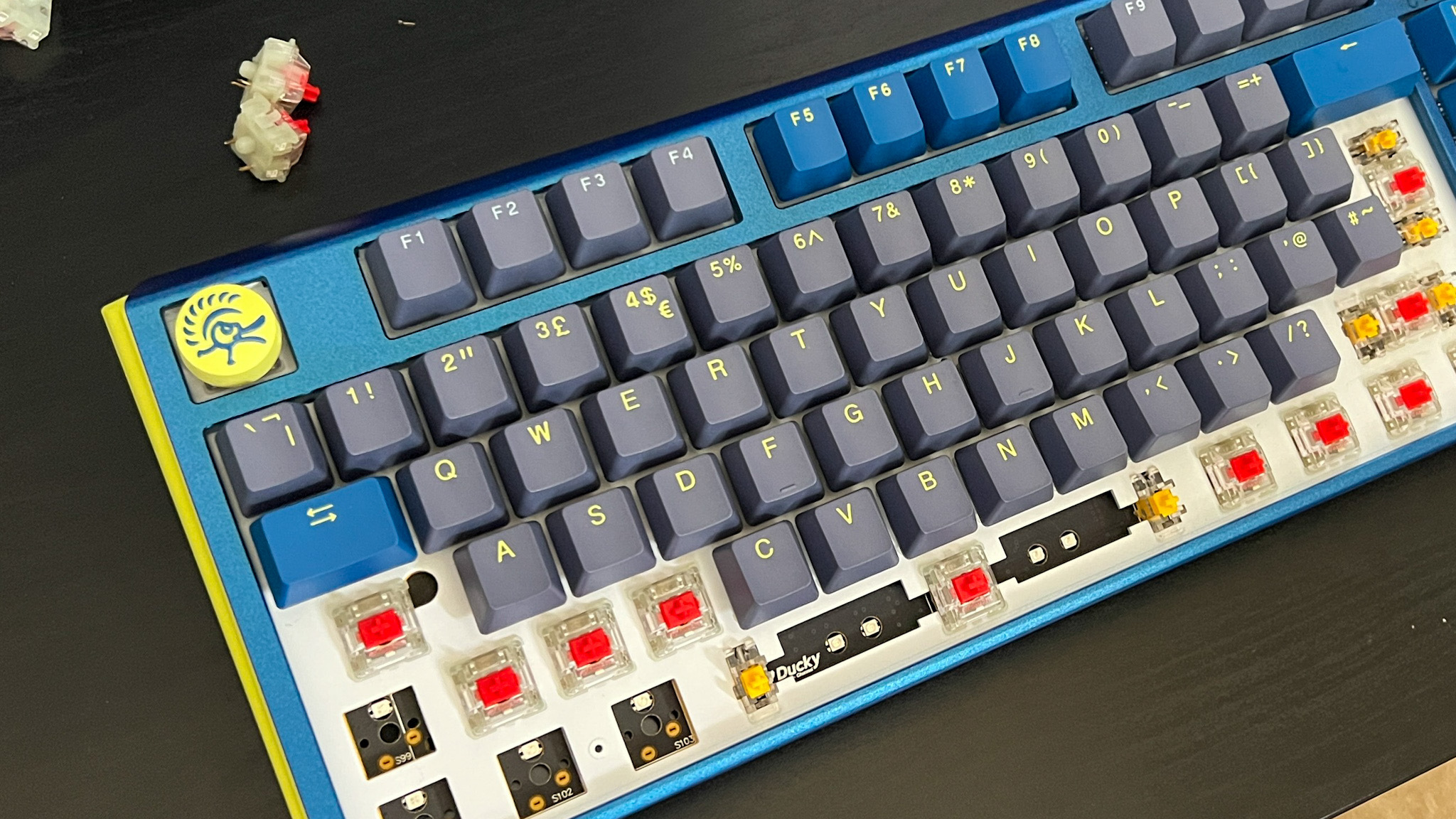
The Ducky One 3 TKL doesn't offer any dedicated media or volume keys either, though there are playback options routed to traditional function buttons (without side-legends). You are still getting N key rollover and a nice low latency response time here, though.
Of course, the hot-swappable switches are a big tick here. We're seeing more and more gaming keyboards allowing users to trade out their switches without touching the PCB, but the move from a typist's market to that of the players is still slow. Being able to easily change the feel of your whole deck without sacrificing the speeds required for twitch-reflex reactions is a major benefit here - and it comes at a great price.
Ducky One 3 performance
I was surprised by the impressive low latency from the Ducky One 3 in my everyday play. I'm used to sacrificing some of the faster response times typically seen from Razer keyboards when adding a luxurious mechanical typing experience to the equation, but there was little to hold me back during more intense moments of gameplay here. I was still twitching into quick time events and dodging with the best reaction time I could personally muster, and benefitted from the excellent typing feel all at the same time.
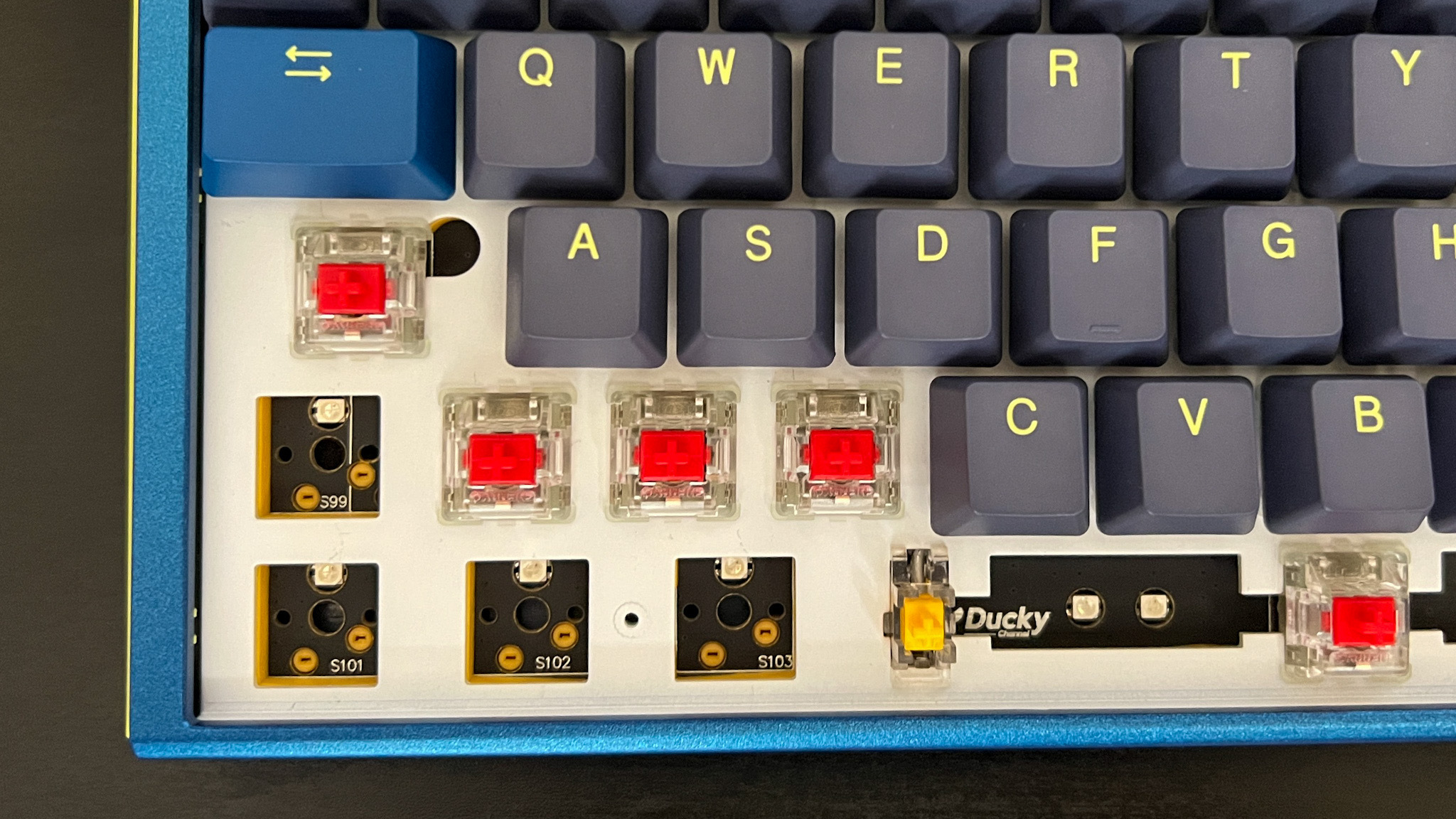
It's that feel where the Ducky really shines. The One 3 feels exquisite to type and play on. While the stock Cherry MX Reds in our test system were still a little scratchy (as is typical of the brand), stabilized keys were solidly positioned with very little wobble and there was a soft landing for each key press as well. Thanks to that sound-dampening foam, there's very little echo running through the chassis - I could only ever hear a slight twang from the backspace and enter keys, and only when directly listening for it. In general, every key landed with a satisfying, crisp thud.
Should you buy the Ducky One 3?
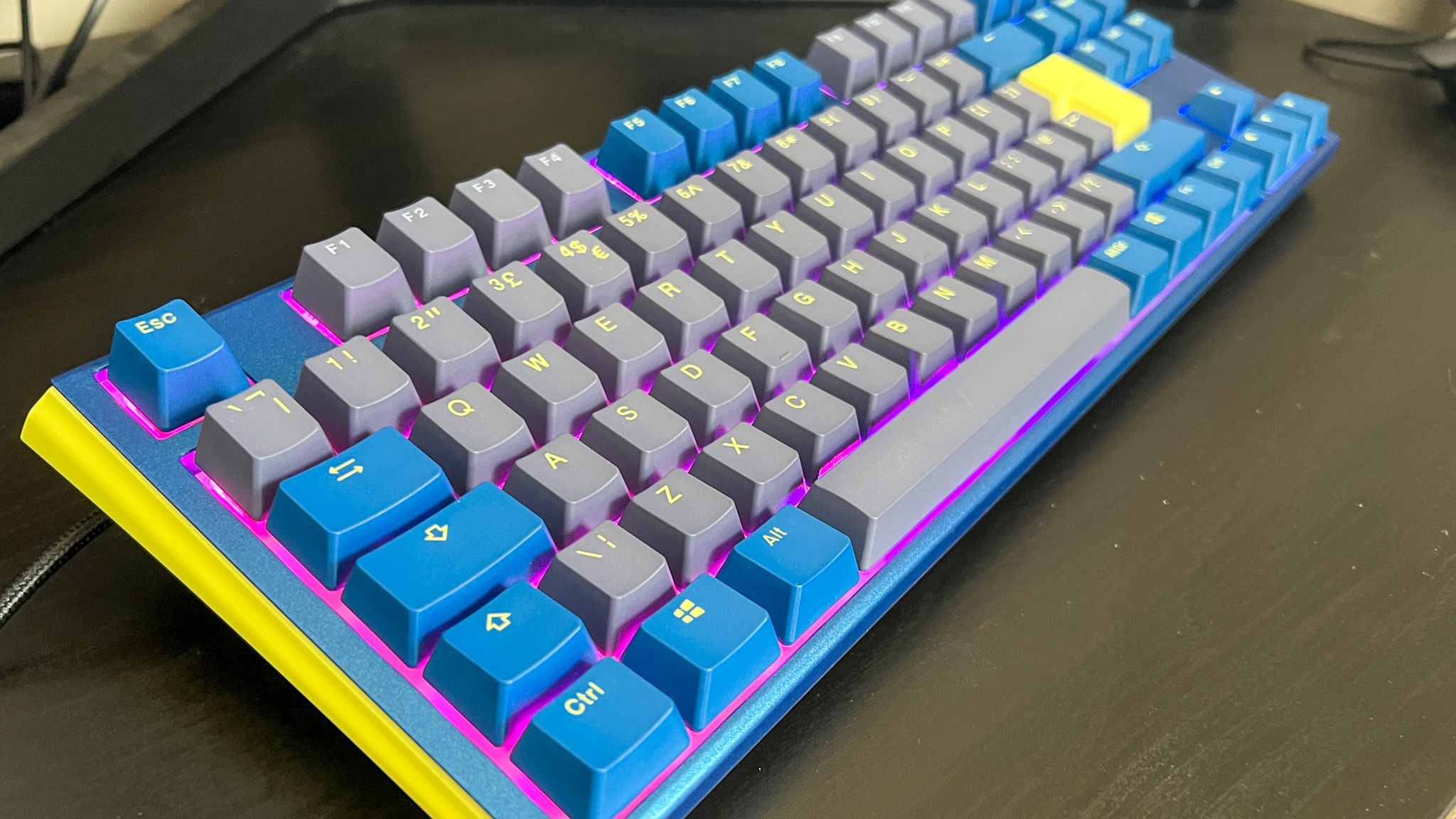
The Ducky One 3 is an excellent option for anyone after the speed of a gaming keyboard with the luxury design and hot-swappable features of a typing-first device. While not necessarily one for those looking to pack their deck with macros and custom RGB settings, this is a feature piece and one that will look and sound fantastic on any desk. At $149.99, this is an easy recommendation if you want to scratch both gaming and hot-swapping itches at the same time. However, if you're being held back by those tricky macro settings, there are some other options out there.
However, if you're not planning on trading those switches out, it's worth taking a look at the TKL version of the Razer Huntsman V2. At $159.99 / £149.99 you're spending a little more, but you're getting access to the Razer Synapse program for programming macros, dedicated media keys, and still keeping responsive, snappy switches. We'd recommend opting for the linear model over the purple clicky here, though.
If you don't want to compromise on either the speed or the hot-swappability of the Ducky, but still want an all-in-one macro powerhouse, the Corsair K70 Pro Mini may be a better option. The 60% keyboard isn't as strongly suited for productivity purposes (you're doubling up on key functionality and dropping arrow buttons), but there's iCue software for personalization and still plenty of speed under the hood.
For those really looking to invest, we'd point you towards the Mountain Everest Max. The modular deck is a little slower but comes with unique detachable num-pad options and a digital display dial which can be added to the TKL base. This one does come in at around $299.99, though.
How we tested the Ducky One 3
I used the Ducky One 3 alongside the Corsair K70 Pro Mini and SteelSeries Apex Pro Mini for two weeks, using the keyboard for four days of work in that time and in playtesting sessions across Shadow of the Tomb Raider, Apex Legends, The Sims 4, and Planet Coaster. I also completed a full switch swap from the stock Cherry MX Reds to a set of Gateron Blues and back again, and used Fall Guys to assess response times in particular. I mapped three macro commands using the onboard system, and altered RGB settings as well. You can find out more about how we test gaming keyboards in our full GamesRadar+ Hardware Policy.
If you're after a wireless gaming keyboard, there are plenty of options filling the shelves these days. For something a little less expensive, though, we'd recommend checking out the latest cheap gaming keyboard deals on the market. We're also rounding up the best gaming mouse models for more setup inspiration as well.

Managing Editor of Hardware at GamesRadar+, I originally landed in hardware at our sister site TechRadar before moving over to GamesRadar. In between, I've written for Tom’s Guide, Wireframe, The Indie Game Website and That Video Game Blog, covering everything from the PS5 launch to the Apple Pencil. Now, i'm focused on Nintendo Switch, gaming laptops (and the keyboards, headsets and mice that come with them), PS5, and trying to find the perfect projector.
